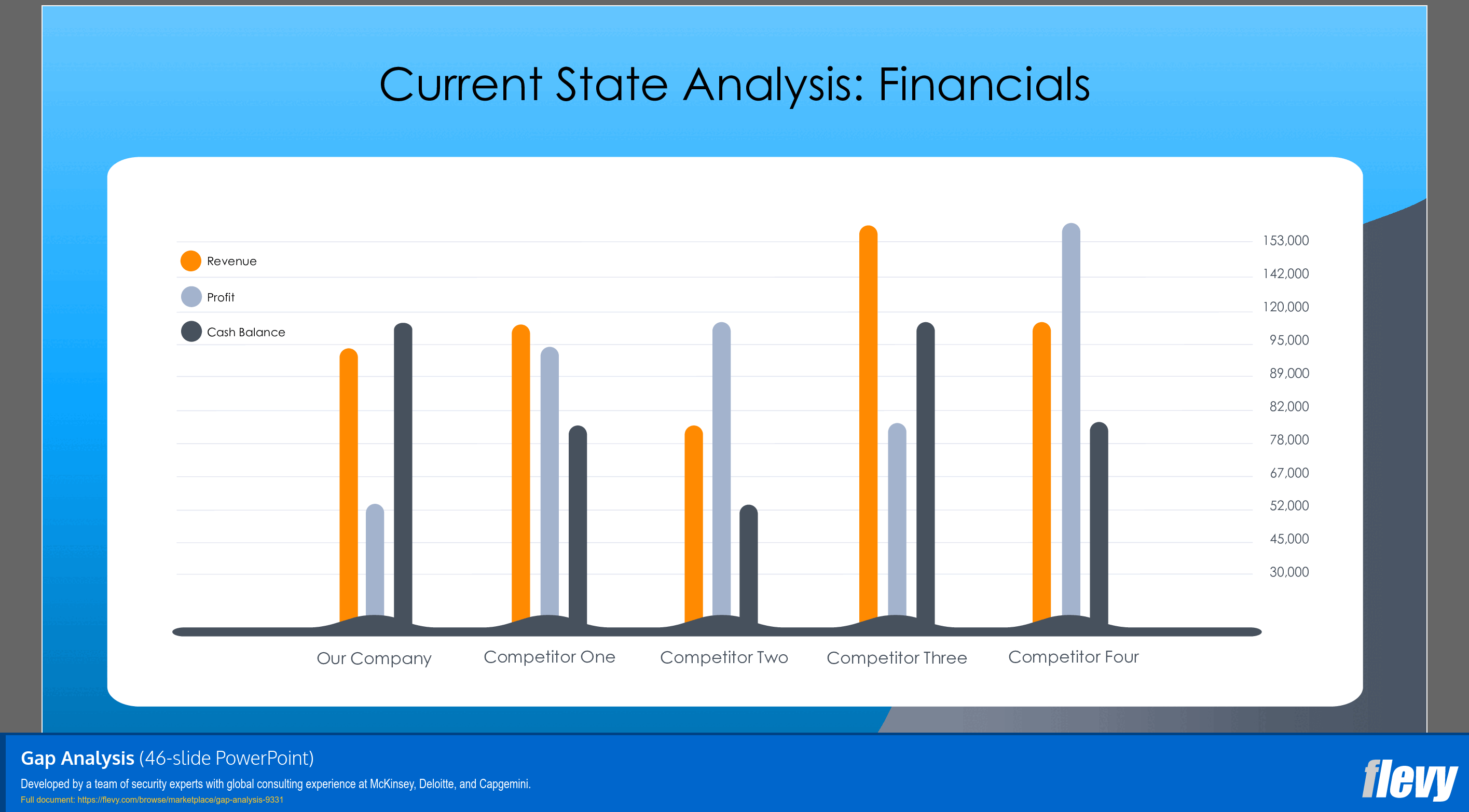Gap Analysis (PowerPoint PPTX Slide Deck)
PowerPoint (PPTX) 46 Slides
GAP ANALYSIS PPT DESCRIPTION
GAP ANALYSIS OVERVIEW
Gap Analysis is a strategic assessment tool used to compare the current state of a business, process, or system with its desired future state. It helps identify gaps between where an organization is and where it wants to be, providing actionable insights for improvement.
Gap Analysis Questions:
• Where are we now? (Current state)
• Where do we want to be? (Future state)
• What are the gaps preventing progress?
• What strategies can bridge these gaps?
Gap Analysis Procedure:
1. Define Objectives – Clearly outline the goals and desired outcomes.
2. Assess the Current State – Gather data on existing processes, performance, and outcomes.
3. Identify Gaps – Compare the current and future states to highlight discrepancies.
4. Develop Action Plans – Create a roadmap to close the gaps with actionable steps.
5. Monitor and Adjust – Continuously track progress and refine strategies.
DETAILED GAP ANALYSIS
Gap Analysis Graph:
A visual representation of gaps between current and desired performance, helping stakeholders understand where improvements are needed.
Current State Analysis:
• Evaluate existing workflows, resources, and outcomes.
• Identify inefficiencies and bottlenecks.
• Measure key performance indicators (KPIs).
Questions to Ask:
• What obstacles are preventing success?
• What resources are needed to close the gaps?
• How do competitors address similar challenges?
Gap Analysis Templates:
• SWOT Analysis Template
• Performance Gap Worksheet
• Benchmarking Tools
MODELS & TOOLS
1. Ansoff Product Matrix: A strategic tool to explore market expansion and product development opportunities.
2. SERVQUAL: A model for assessing service quality gaps by comparing customer expectations and perceptions.
3. Fishbone Diagram (Ishikawa): A cause-and-effect tool to identify root causes of performance gaps.
4. McKinsey 7-S Framework: An organizational analysis tool assessing seven key factors—strategy, structure, systems, shared values, skills, style, and staff.
5. Nadler-Tushman Congruence Model: A framework evaluating how well different organizational elements align to drive performance.
By leveraging these models and tools, organizations can systematically identify and address gaps, ensuring continuous growth and efficiency.
Got a question about the product? Email us at support@flevy.com or ask the author directly by using the "Ask the Author a Question" form. If you cannot view the preview above this document description, go here to view the large preview instead.
Source: Best Practices in Gap Analysis PowerPoint Slides: Gap Analysis PowerPoint (PPTX) Presentation Slide Deck, RadVector Consulting









